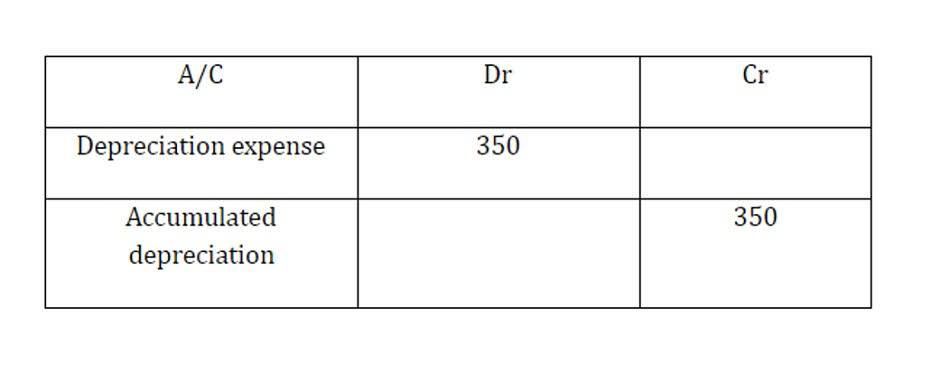
The https://www.bookstime.com/ is a fundamental principle stating that a company’s assets (i.e. resources) must always be equal to the sum of its liabilities and equity (i.e. funding sources). If your business has more than one owner, you split your equity among all the owners. Include the value of all investments from any stakeholders in your equity as well. Subtract your total assets from your total liabilities to calculate your business equity. But, that does not mean you have to be an accountant to understand the basics. Part of the basics is looking at how you pay for your assets—financed with debt or paid for with capital.

In this case, Speakers, Inc. uses its cash to buy another asset, so the asset account is decreased from the disbursement of cash and increased by the addition of installation equipment. The accounting equation sets the foundation of “double-entry” accounting, since it shows a company’s asset purchases and how they were financed (i.e. the off-setting entries). This increases the cash account (Asset) by $120,000, and increases the capital stock (Equity) account. These may include loans, accounts payable, mortgages, deferred revenues, bond issues, warranties, and accrued expenses.
Assets = Liabilities + Owner’s equity
The accounting equation connotes two equations that are basic and core to accrual accounting and double-entry accounting system. As a small business, your purchases are funded by either capital or debt. Let’s take a look at the formation of a company to illustrate how the accounting equation works in a business situation. Required
Explain how each of the above transactions impact the accounting equation and illustrate the cumulative effect that they have.
The accounting equation is only designed to provide the underlying structure for how the balance sheet is formulated. As long as an organization follows the accounting equation, it can report any type of transaction, even if it is fraudulent. At first glance, you probably don’t see a big difference from the basic accounting equation. However, when the owner’s equity is shifted on the left side, the equation takes on a different meaning.
Effects of Transactions on Accounting Equation
In addition, the accounting equation only provides the underlying structure for how a balance sheet is devised. Any user of a balance sheet must then evaluate the resulting information to decide whether a business is sufficiently liquid and is being operated in a fiscally sound manner. Before getting into how the accounting equation helps balance double-entry bookkeeping, let’s explain each element of the equation in detail.
- Include the value of all investments from any stakeholders in your equity as well.
- Often, a company may depreciate capital assets in 5–7 years, meaning that the assets will show on the books as less than their “real” value, or what they would be worth on the secondary market.
- If the left side of the accounting equation (total assets) increases or decreases, the right side (liabilities and equity) also changes in the same direction to balance the equation.
- If an accounting equation does not balance, it means that the accounting transactions are not properly recorded.
- The accounting equation is also called the balance sheet equation.
It represents what is left from the assets when all the liabilities have been paid off. So, now you know how to use the accounting formula and what it does for your books. The accounting equation is important because it can give you a clear picture of your business’s financial situation. It is the standard for financial reporting, and it is the basis for double-entry accounting.
Sample Accounting Equation Transactions
The accounting equation states that a company’s total assets are equal to the sum of its liabilities and its shareholders’ equity. The accounting equation is the basic element of the balance sheet and the primary principle of accounting. It helps the company to prepare a balance sheet and see if the entire enterprise’s asset is equal to its liabilities and stockholder equity. Using this version, it’s easier to highlight the relationship between liabilities and equity.
- The accounting equation equates a company’s assets to its liabilities and equity.
- Furthermore, it doesn’t totally keep accounting mistakes from being made.
- The balance sheet is a more detailed reflection of the accounting equation.
- In other words, this equation allows businesses to determine revenue as well as prepare a statement of retained earnings.
- This equation is behind debits, credits, and journal entries.
- The accounting equation helps to assess whether the business transactions carried out by the company are being accurately reflected in its books and accounts.
At a general level, this means that whenever there is a recordable transaction, the choices for recording it all involve keeping the accounting equation in balance. The accounting equation concept is built into all accounting software packages, so that all transactions that do not meet the requirements of the equation are automatically rejected. You can automatically generate and send invoices using this accounting software. Further, creating financial statements has become considerably easier thanks to the software, which lets you draft balance sheets, income statements, profit and loss statements, and cash flow statements. Since the balance sheet is founded on the principles of the accounting equation, this equation can also be said to be responsible for estimating the net worth of an entire company. The fundamental components of the accounting equation include the calculation of both company holdings and company debts; thus, it allows owners to gauge the total value of a firm’s assets.
The balance sheet reports a company’s assets, liabilities, and owner’s (or stockholders’) equity at a specific point in time. Like the accounting equation, it shows that a company’s total amount of assets equals the total amount of liabilities plus owner’s (or stockholders’) equity. Double-entry accounting uses the accounting equation to show the relationship between assets, liabilities, and equity. When you use the accounting equation, you can see if you use business funds for your assets or finance them through debt. The accounting equation is also called the balance sheet equation.
The inventory (asset) will decrease by $250 and a cost of sale (expense) will be recorded. (Note that, as above, the adjustment to the inventory and cost of sales figures may be made at the year-end through an adjustment to the closing stock but has been illustrated below for completeness). Like any mathematical equation, the accounting equation can be rearranged and expressed in terms of liabilities or owner’s equity instead of assets. The income statement is the financial statement that reports a company’s revenues and expenses and the resulting net income.
